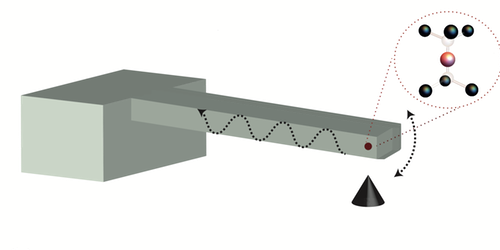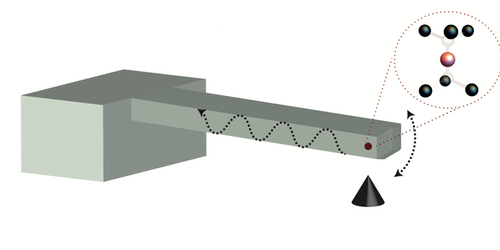Reducing Vibrations in Mechanical Beams
A standard technique for cooling atoms is hitting them with photons. The atoms’ kinetic energy—their temperature—changes with each absorbed or emitted photon, and this process can be tuned such that the atoms get colder. Now Kosmas Kepesidis, from Technische Universität Wien (Vienna) in Austria, and colleagues have proposed an analogous method for “cooling” a tiny bending beam, which uses phonons—vibrational quanta—instead of photons. If realized, this new method could significantly broaden the number of nanomechanical systems that could be cooled.
In their proposed method, the researchers consider a diamond nanobeam bending above a magnetic tip (the beam is clamped at one end and free to move at the other). Near the oscillating end they insert a lattice defect, specifically a silicon-vacancy center. As the beam bends, the defect experiences a varying magnetic field, which can flip its spin by absorbing mechanical energy from the beam’s low-frequency bending modes. If the defect is then stimulated with microwaves into an excited state, this energy is dissipated via emission of a high-frequency lattice phonon. According to the team’s predictions, the mechanical temperature of the beam—how much it bends—can then be tuned by optimizing these absorption and emission processes in the same way that the temperature of atoms can be controlled with light. The researchers propose that this method could also be used to squeeze and entangle different bending modes of the beam.
This research is published in Physical Review B.
–Katherine Wright
Katherine Wright is a Contributing Editor for Physics.





